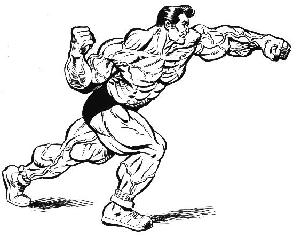Ways of getting stronger
Despite what pop-fitness would have you believe, getting stronger depends on many factors. As such, numerous training methods can facilitate strength gain at different times. Whether certain methods should be used depends on the circumstances of the period.
Factors that contribute to strength gain include hypertrophy, increased neuromuscular recruitment, and resolving neuro-inhibitory issues. Hypertrophy increases strength via muscle thickening that increases tension capacity. Increased recruitment strengthens by firing more fibers/gto(Golgi tendon organ)-inhibition. Solving inhibitory issues like injury/instability reduces your nervous system's "fear to be strong".

Hypertrophy training
Hypertrophy training contributes to getting stronger by maximizing "recoverable" muscle damage. Meaning, if current training causes easily-recoverable damage (i.e. high-force/low-rep), "up it" a bit for more size. If training damage is overwhelming recovery, lessen it. In fact low-demand training periods often allow for repair to greater size that more-demanding periods would've inhibited. So, if you want to get stronger with more size, maximize recoverable muscle damage.
Training to enhance recruitment
Training to increase recruitment means challenging muscles to be stronger (more-forceful). Such training, though not intended for hypertrophy, induces growth when diet and recovery allow. As such, maximizing recruitment is the most sure-fire way to gain strength under most circumstances. For max recruitment, every moment of every rep/set communicates the need to make neuromuscular changes for greater force. That means lifting with max-force magnitude; not slow, fatiguing, and prolonged tension (long bouts of low-tension only benefit strength in rare situations where they facilitate general hypertrophy)! So, for more recruitment, push/pull as hard as possible.
Minimizing strength-inhibitors
Minimizing neuro-inhibitory factors like injury/instability involve therapy and training. Therapeutic modalities like ice and massage help limit the impairment of injury inflammation and stiffness; which, less pain and stiffness, allows for "bolder" more forceful muscle contractions. Stronger stability from focused training gives the neuromuscular "green-light” to fire harder! So addressing injury/instability is key to strength gain.
When to do what
Next question is when to implement the various strength-gaining strategies. Well, addressing injury/instability is always a top priority. Hypertrophy and recruitment training, however, should be scheduled appropriately. Factors like adaptational status, sport, and genetics are among many that determine whether hypertrophy or recruitment training is preferred.
Adaptational status
In terms of adaptational status, more elite development of a given quality indicates less improvement potential of that quality. For example if you've built vast hypertrophy, potential to get stronger from "even-bigger" muscles is minimal. On the other hand, if you bench double body-weight, recruitment is extremely developed; therefore benching more via "even-more" recruitment is less likely. So if already massive, improve recruitment to get stronger. Whereas, if you're already recruiting most of your muscle, gain muscle to get stronger.
Needs of sport/task
Sport/task influences how strength is gained due to body-weight concerns. If you're an underweight lineman, hypertrophy mediated strength is desirable. If, however, you're close to a weight limit, increased recruitment is the option for increased strength.
Genetics
Genetics influence how to best gain strength by determining potential development for hypertrophy/strength. If you and your relatives are thinly muscled, getting strong via huge muscles is unlikely. If, however, you and your relatives are inherently strong and muscular, hypertrophy and recruitment potential are promising.
Conclusion
As can be seen, there are a number of factors that contribute to getting stronger. Making muscles bigger and / or recruiting more existing muscle are among those factors. The strategy to choose, however, depends on circumstances, adaptational status, sport, and genetics.